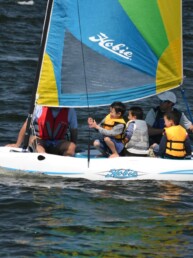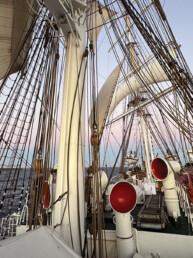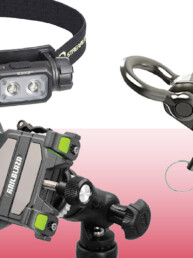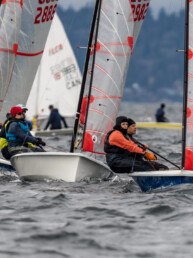Shopping for a new sailboat or considering changing the current setup onboard your own boat to provide extra space behind the engine? Since the dawn of inboard engines aboard vessels, sailboats have been equipped with direct drive propulsion and it has proven to be a success in design and function over the years. But nowadays, almost a third of new boats are being built with a saildrive. So, what’s the big deal? Are they something to run away from? Are they better than the tried-and-true direct drive system most of us know well? What are the pros and cons of each, and which would you want to have on your boat? I will cover some of the basic concepts of both methods of propulsion below from the perspective of a diesel mechanic, including the pros and cons of each.
Direct Drive
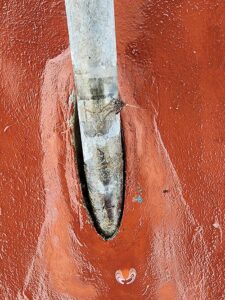
Let’s start with the conventional concept of “direct drive” as our system of propulsion. Direct drive propulsion involves a straight propeller shaft that’s bolted onto the engine’s reverse gear, exiting through the bottom of the boat via a shaft seal such as a PSS dripless seal or a standard packing gland, going through a cutlass bearing (or support bearing within the strut essentially) before having a propeller of pretty much any style bolted onto the end of the shaft. Early propeller shafts on much older boats (60-100 years old) were often constructed of Monel—a very strong and corrosion-resistant mix of metals including nickel and copper along with small amounts of several other metals—which performed well, but were insanely heavy! Then came bronze shafts that were very corrosion resistant, but rather soft. Finally, stainless steel was used because it is stronger than bronze, but not quite as corrosion resistant when it comes to oxygen depletion. Stainless is what most direct drive shafts are made of today.
Direct drive setups are straight forward to service and just about any boatyard knows what to do with maintaining this portion of your propulsion system. Shaft anodes are typically easy to find at chandleries and marine stores, components throughout the system are relatively affordable to replace—including the shaft if it’s bent or damaged—and best of all, there’s no gaping hole in the bottom of the boat. The only consumable components to maintain or replace, such as the cutlass bearing, prop, or shaft seal, are actually built to last a fairly long time. Much of this setup typically sees failure only in the event of neglect, hitting something, or improper installation. Direct drives are simple, reliable, low-key setups that shouldn’t require too much upkeep if properly maintained.
One compromise on boats with a direct drive system is that the propeller shaft goes through the bottom of the boat at a slight angle (15 degrees or less) meaning that space behind the engine isn’t really usable for storage or living space. Depending on the boat, its intended use, and the sailor using it, this may be a significant reduction in utility. A lot of older boats typically have the engine mounted as far aft as possible, sometimes with significant dead space behind the engine as a result thanks to an exposed spinning propeller shaft. If the engine is mounted farther forward in the boat, then some sort of tunnel or open space (known as a shaft alley on bigger vessels) has to be made for the prop shaft as it exits the bottom of the boat, making the space undesirable to store anything, or to use for living space.
According to some folks, direct drives can be more prone to vibration as well; however, if properly installed, aligned and maintained, I don’t necessarily agree with this. Indeed, alignment of a direct drive setup is critical for longevity of its components, the reverse gear, oil seals, and other parts to avoid significant vibration and even damage. Unfortunately, it is possible to repair or install a direct drive system adequately in most facets, but to not understand or attend to the crucial importance of extremely accurate alignment, which can lead to more issues for the boat owner down the road.
Saildrives
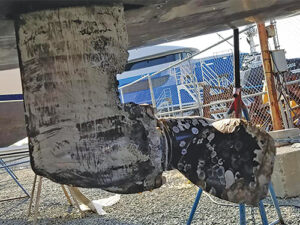
All that direct drive stuff sounds pretty good, doesn’t it? So, why are some vessel manufacturers moving away from direct drives as their standard setup? The biggest reason is living and storage space. Saildrives are a rather neat innovation for the “space” problem aboard sailboats where space is at a premium. Saildrives remind me of inboard/outboard engines found on some small power boats, where the inboard diesel sits comfortably underneath your companionway stairs or inside a usually tiny cabinet. The reverse gear that is bolted to the back of the engine actually exits the hull directly below through a large rubber diaphragm bellows into the water where a lower unit that looks like an outboard’s lower unit is attached. The lower unit is a sleek shape, just like an outboard would have, and is built out of lightweight aluminum that reduces drag and the need for super precise alignment of multiple parts.
Saildrives are only built for engines that are 80 hp or less, so you typically only find them on sailboats. Volvo Penta and Yanmar are the two most common saildrive manufacturers I come across, and they are designed to give the owner as much space as possible inside the boat. Their lightweight nature and sleek design make them desirable to many racers I know where drag is reduced and with the right propeller. Additionally, they are fairly quiet compared to the classic direct drive. Most of the vessels that I have worked on do, in fact, make great use of the extra usable storage or living space with amenities such as a full size bed in the aft cabin directly behind the engine, but this comes with its own compromises.
While comfort and space is a nice plus for the interior of a sailboat, the cost-benefit balance can be quite challenging. Early saildrive owners had the understandable fear of the bellows leaking or tearing; however, this was quickly shown to be extremely rare for something that catastrophic to happen, and the design of the “through-hull” bellows has been improved since those first sail drives appeared on the market.
One primary compromise is that saildrives require more, and more frequent, maintenance. Many stipulate hauling the boat out of the water to change the oil once a year. Volvo actually has released a new saildrive where this process doesn’t necessitate hauling the boat, but a majority of saildrive lower-unit oil changes are still done out of the water.
Another common complaint often relates to sacrificing engine compartment space. Space may be so limited that a comparatively simple repair like replacing a heat exchanger, manifold, or some other part could require pulling the engine out of its compartment. This is unusual, time consuming, and costly.
An even bigger issue is how susceptible to galvanic corrosion the saildrive’s lower unit is, since the housing is built out of aluminum. As we know, aluminum is a sacrificial anode in every body of water—fresh, brackish, or salt. Staying on top of your anode replacements is, thus, critical to protect the unit. If you want to add a folding prop or extra through-hulls to your saildrive system, increasing the size of the anode surface area is super important. The saildrive’s original factory-equipped anode will be designed for a standard prop/through-hull setup. Changes to your setup may well require changes to the anode. A seemingly minor scratch in the paint on the lower unit can be catastrophic if not cleaned up properly and repainted right away. Installing a galvanic isolator is also a good idea to protect your lower unit from the boats around you. Having serviced lower units personally, I can’t tell you how many I had to replace due to severe corrosion; and the owners didn’t even know anything was wrong.
Like all elements of boat design, there are compromises with both direct drives and saildrives, and each of these technologies have their fair share of quirks and problems. However, both are reliable and functional if well maintained by a diligent boat owner. Saildrives require more diligence and money in terms of regular upkeep, are not very forgiving to inattentive maintenance; but they offer a smoother, quieter ride as well as more interior space. A direct drive system is tried and true in terms of how it works and who can service it when it does need repair. Usually, a conventional direct drive setup won’t require that work be completed by a shop designated by the manufacturer, which might appeal to cruisers headed to remote locations.
The choice between these attributes won’t necessarily be the deciding factor for any person buying a boat or trying to understand the one they already own more deeply. Still, in the complex world of boat systems, these considerations are worth examining closely and should inform your expectations for future maintenance and ownership. Which one would you choose?
Meredith Anderson is the owner of Meredith’s Marine Services, where she operates a mobile mechanic service and teaches hands-on marine diesel classes to groups and in private classes aboard clients’ own vessels.

